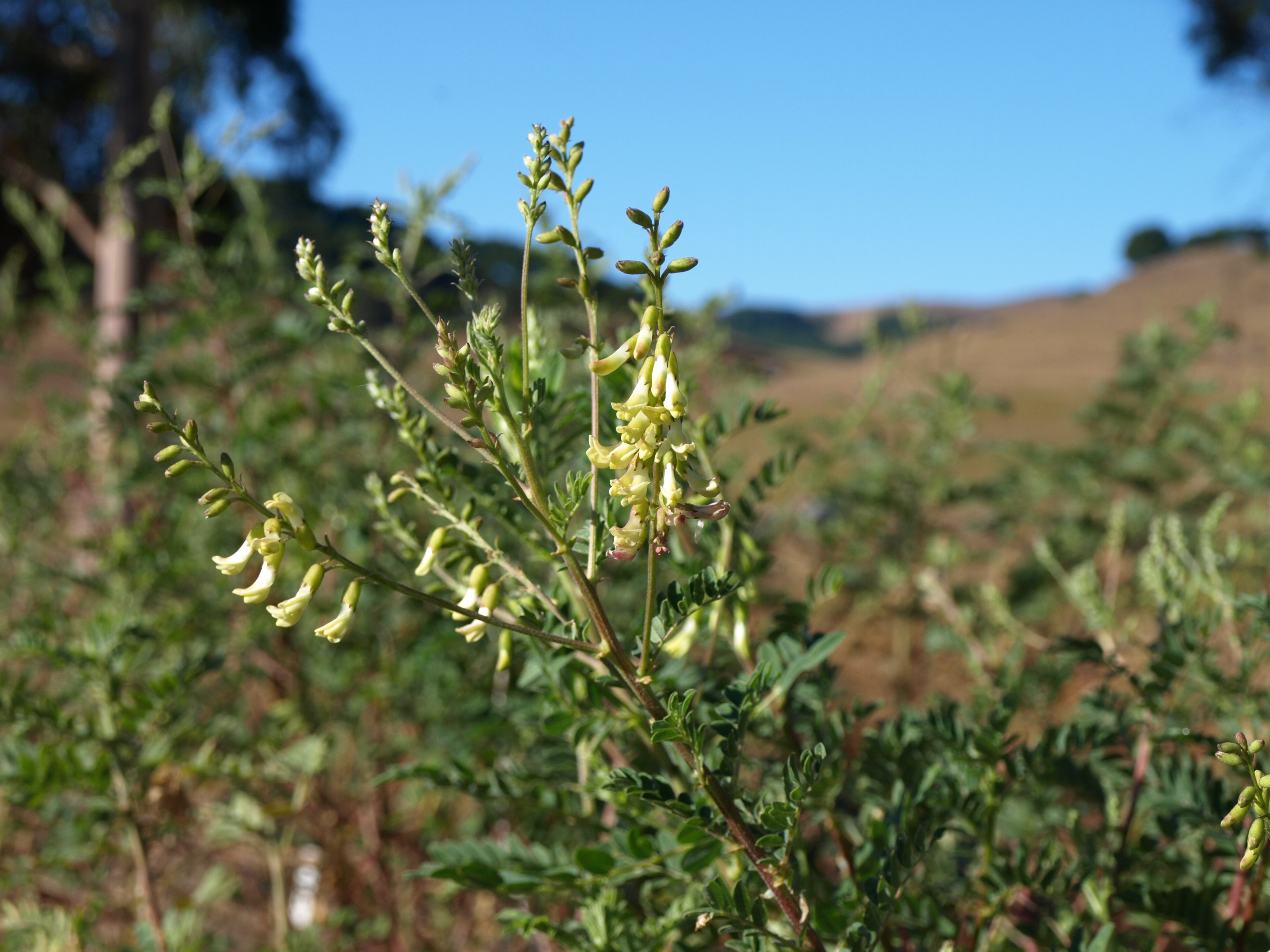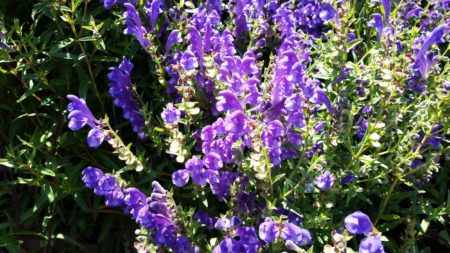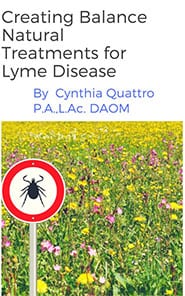An interview with Peg Schafer from Chinese Medicinal Herb Farm, Petaluma, CA
Written By: Cynthia Quattro P.A., L.Ac. DAOM
“I would like to be an advocate not only for growers but for the plants themselves and of their medicine. It is important for people to know that growers can produce good quality herbs that are effective. “
Scutellaria baicalensis Huang qin photo by Peg Schafer
Hello Peg. Thank you for taking the time for this interview. I am very interested to know more about the surging interest in domestically grown Chinese herbs. Locally sourced herbs would seem to be mutually beneficial for the practitioner and the patient but there are questions about their sustainability globally, and their medicinal potency.
My own experience with Chinese herbs began more than 20 years ago. During my studies in China I was able to visit where some of these herbs grew in their native environment. Wild harvested herbs were more widely available but with modernization the growing trends have changed. Your knowledge and experience growing Chinese herbs domestically is in demand especially now during these changing times.
1. How did you begin learning about growing Chinese herbs?
I was going to an acupuncturist and found herbs to be effective for my condition. Then my acupuncturist began giving me Chinese herb plants to grow in my garden. Up until that time I was the greenhouse manager on another farm. After two years of trialing and conducting a market analysis of growing and selling Chinese herbs I began to recognize their unique growing characteristics and began a business growing them. That was 18 years ago.
2. What did you notice when growing them initially that made them seem unique?
Whereas vegetables are annuals, most Chinese herbs are perennials. Perennials are a lot easier to grow. These plants are also more “wild”, meaning they don’t require as much attention and soil cultivation. When there is less disturbance to the growing environment and soil food web it encourages a healthier eco system. Since they have not been domesticated, essentially “unselected”, I found the more they were left to grow naturally, and stressed by natural conditions, they seemed to express themselves more as they would in nature. And being more in line with nature also leaves the ecosystem more intact.
3. One of the leading concerns for the herbalists is the content and quality of the medicinal ingredients. What have you found in testing domestically grown herbs compared to those grown in China?
Herbs that have been grown domestically have been tested and found to have as much or more constituent values according to the materia medicas than some of the ones imported. We started investigating why that is the case.
Since everything is tracked and farm mapped we found that it was the herbs that were less cared for with less inputs and nutrients, and grown more leanly that actually produced more constituents that practitioners were looking for.
4. I see a lot of chronic disease in my practice. I find if I add just the right tonic herbs to their formula, (often classified as adaptogens), regardless of what else they are taking for their condition, they improve. Do you think domestically grown Chinese herbs can provide the potency expected of these types of herbs?
Besides herbal manufacturers, proprietary corporations, universities, and the U.S. forest service have tested locally grown herbs and some have shown equal or even more active constituents than those imported from China. Some speculate that since domestic herbs are fresher when tested they may show an increase in their active constituents.
5. If these herbs express better medicinal properties if they are grown more “wild”, how can growers preserve their “wild nature”? Is it the seed quality that they should aim to preserve?
Genetics of the seed certainly are a factor in its medicinal properties. There is a whole world to traditional plant breeding and here on the CMHF we are guided by “wild” intentions. Also the integrated farming systems of polyculture. This might include not only limited row cropping, and forest farming but also companion planting. We avoid mono cropping but grow mini crops together which creates a whole environment with a biologically intact situation of soil, flora, and fauna. In this way, small insects all work in a community unlike in a mono culture where there are only a few sets of insects to pollinate. As long as there are enough plants for genetic stability this ends up giving more biodiversity to the plants and their seeds and is more healthy for their environment and eco system.
6. On a practical level do you think is there enough of a demand for locally grown Chinese herbs?
There is a huge demand from all sectors not just eastern or western practitioners. There is also a growing demand from the manufactures trade, tea companies, neutraceutical companies, tincture makers, topical treatment manufacturers. Considering the negative press about the questionable purity of the herbs from China, I don’t have to spend a lot of time trying to sell them.
7. What about the higher cost? Herbs grown and packaged here cost a lot more to the consumer than those that are imported. Do you think the market will adjust to the higher costs?
As a domestic industry I don’t think they will be able to compete based on price, but will rely more on the accountability of its sources and the freshness and cleanliness. It is an alternative to questionable sources and quality from China.
8. In Native American traditions there is a commonly known reverence to protect the earth, especially in regards to plants that have traditionally been their food and medicine. Do you see yourself in a similar way almost as a protector of Chinese herbs or of their medicine or both?
I never really thought of it that way but I do think of myself as a protector since they are being beleaguered from a conservation point of view. They are often being over harvested increasingly threatening the endangered species. Farmland is being taken out of production due to land conversion for housing and livestock grazing, mining, and farming expansion. The draining of wetlands and loss of wilderness is not exclusive to China but a worldwide issue affecting climate change. Some of the herbs prefer to grow in specific niches like higher elevations or stream side, pond side or wetlands –these are vulnerable locations
.
An “ah ha” moment as a gardener. This medicinal plant, Alisma plantago-aquatica subs. orientale Ze xie, is one that grows in shallow water. Its medicinal properties include removing excess dampness from the body. Most medicinal plants not only heal us but heal the earth.
9. What suggestions can you offer for someone who is interested in growing Chinese herbs on a small scale or large scale or even as a backyard grower. Should they try to grow ones that are tending toward extinction or mainly the more common ones?
For a backyard gardener, or growing just a few plants, they should grow ones they plan to use. Be it a food plant or a spirit plant or one they just have an affinity for. Because having a personal association with the plant will tend to make it more likely they would take care of it and have the desire to see it flourish.
For farmers it can be more of an ethical situation. The tendency might be more towards wild cultivation. If they grow herbs that are starting to become endangered and if they have the right ecosystem, we lessen the impact on the wild. As more herbs are taken out of China we are lessening the comprehensive gene pool which make them more vulnerable for extinction. Some have long reproductive cycles if we are not careful we may lose some herbs.
On the other hand, farmers will need to include herbs that will help them make a living. Some common herbs that are relatively easy to grow include Chrysanthemum morifolium, Ju hua, which provides a good harvest every year and makes a very good tea. Agastache rugosa or Korean mint, Tu hou xiang, is also easy to grow.
Scutellaria baicalensis, Huang qin, Astragalus membranaceous, Huang qi are both grown for their medicinal roots. It generally takes 3 -4 years before harvest but they also have attractive flowers.

Astragalus membranous, Huang qi photo by Peg Schafer
10. Your book, is a valuable resource for growing Chinese herbs. What made you decide to write it and how did it evolve?
The book has been a work in progress over the past 16 years. I kept a database of everything I grew and the conditions and results of my growing methods. There has been so much interest in growing Chinese herbs that I wrote it as a resource not only for students and practitioners that want to learn more about the herbs they are using in their clinics, but also as a springboard for farmers interested in growing them as a business. I have been surprised by its distribution since it has spread from the US to international destinations as well.
11. Learning and experiencing growing Chinese herbs on your farm has been such a rewarding experience. Seeing the herbs growing and thriving in a natural environment has shed a beacon of light on a troubling issue for myself and the herbalist community. For me, I feel more drawn to seek out resources to preserve this growing trend and continue its progress.
You are one of the pioneers in the preservation of Chinese herbal medicine. Do you have any last thoughts to share?
As we are exceeding the carrying capacity of China for herbal medicine we need to be growing as many of these herbs in countries where there is the demand and where they will be used.
The magic of the herbs apply to all beings not just human beings, animals and earth beings as well. Earth takes care of itself and provides its own balance in nature.
Thank you Peg, for all of this valuable information and especially in teaching us how to take care of the Earth’s natural medicine.
More information at http://www.chinesemedicinalherbfarm.com
Published in Medicinal Roots Magazine Summer 2015
http://www.medicinalrootsmagazine.com/uploads/6/9/2/2/692250/issue2.0.pdf



